How to care for your lavender plant: essential tips and tricks
Lavender plant care
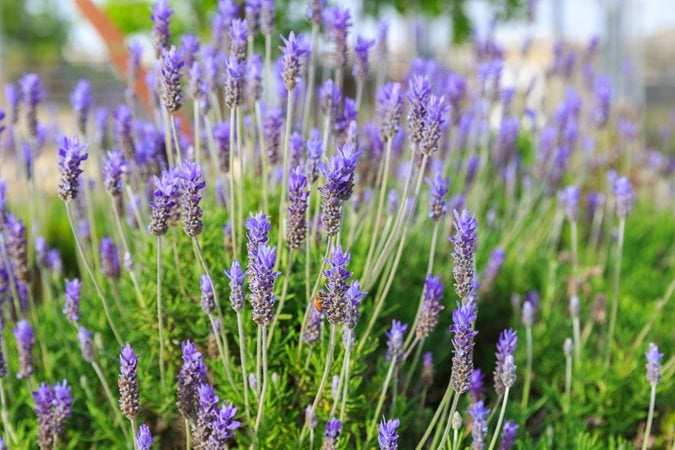
Lavender is a beautiful and versatile plant that is prized for its fragrant flowers and medicinal properties. Whether you are a seasoned gardener or just starting out, knowing how to properly care for your lavender plant is essential to ensure its health and longevity. In this article, we will provide you with some essential tips and tricks to help you successfully grow and maintain your lavender plant.
1. Choose the Right Location: Lavender plants thrive in sunny locations with well-drained soil. It is important to choose a spot that receives at least 6-8 hours of direct sunlight per day. Avoid planting lavender in areas that are prone to standing water or have heavy clay soil, as this can cause root rot and other issues.
2. Planting and Watering: When planting lavender, make sure to space the plants at least 12-18 inches apart to provide adequate airflow. Lavender plants prefer dry conditions, so it is important to water them sparingly. Overwatering can lead to root rot and other fungal diseases. Water your lavender deeply once a week, allowing the soil to dry out between waterings.
3. Pruning and Harvesting: Pruning is an essential part of lavender plant care. In early spring, prune your lavender plants back by about one-third to promote new growth and prevent them from becoming woody. After the first year, you can prune your lavender plants more rigorously in order to maintain their shape and encourage bushier growth. Harvest the flowers just as they begin to open for the best fragrance and oil production.
4. Pests and Diseases: Lavender plants are generally resistant to pests and diseases, but they can occasionally be affected by aphids, spider mites, and fungal infections. Inspect your plants regularly and remove any pests by hand or with an insecticidal soap. If you notice signs of fungal diseases such as powdery mildew, treat your plants with a fungicide recommended for use on lavender.
5. Winter Care: Lavender plants are relatively hardy and can withstand cold temperatures, but they may need some protection in harsh winter climates. Before the first frost, cover your plants with a layer of mulch to insulate them and protect their roots. In very cold climates, consider growing lavender in pots so that you can bring them indoors during the winter months.
By following these essential tips and tricks for caring for your lavender plant, you can enjoy its beauty and fragrance for years to come. Remember to choose the right location, provide adequate watering and drainage, prune and harvest as needed, and protect your plants during the winter months. With a little bit of care and attention, your lavender plant will thrive and bring you joy all season long.
Why Lavender Plants Need Care: The Importance of Maintenance
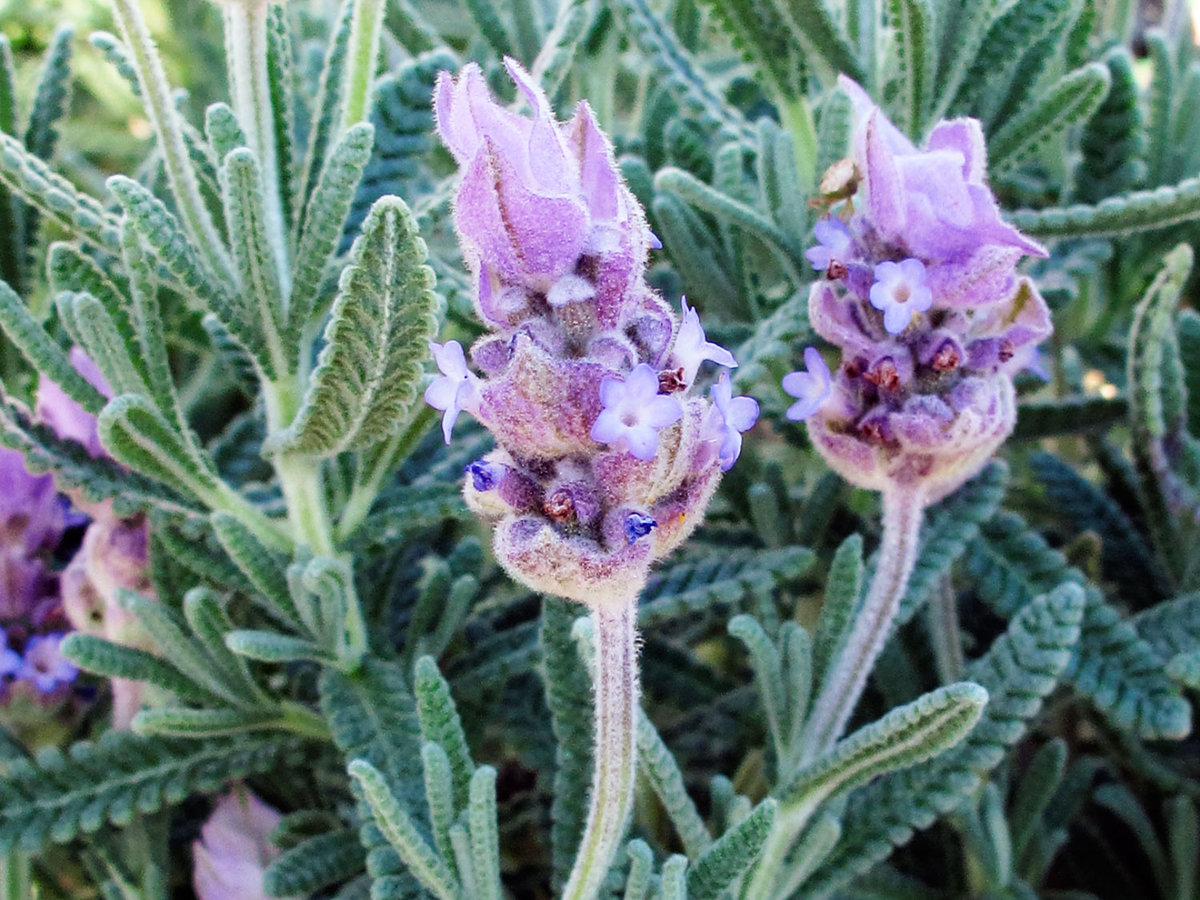
Lavender plants are not only beautiful additions to any garden, but they also require regular care and maintenance to thrive. Whether you have a few Lavender plants in pots or a whole Lavender field, providing proper care is crucial for their overall health and longevity.
Caring for Lavender plants ensures that they remain robust and continue to produce vibrant blooms year after year. Maintenance tasks such as pruning, watering, and fertilizing help keep the plants in optimal condition and prevent common issues like diseases and pest infestations.
Pruning: Regular pruning is essential for Lavender plants as it helps maintain their shape, encourages new growth, and improves air circulation. It’s best to prune Lavender in early spring right before new growth begins. Cut back any dead or damaged stems and trim the overall bushy shape to prevent leggy growth.
Watering: While Lavender plants are known for their ability to tolerate drought, they still require regular watering, especially during dry spells. It’s important to water the plants deeply, allowing the soil to soak the moisture thoroughly. However, avoid overwatering, as Lavender prefers well-draining soil.
Fertilizing: Lavender plants benefit from a light application of slow-release fertilizer in early spring. This helps provide essential nutrients necessary for healthy growth and abundant blooms. It’s important to follow the manufacturer’s instructions for proper dosage and application method.
Weeding: Regular weeding is crucial to remove any competing plants that may affect the growth and health of Lavender. Weeds can rob Lavender plants of nutrients, water, and sunlight, so it’s important to keep the area around the plants weed-free.
Pest Control: Keeping an eye out for common pests such as aphids, spider mites, and slugs is vital in maintaining the health of Lavender plants. Early detection and appropriate pest control measures, whether through organic or chemical means, can prevent severe damage to the plants.
By providing regular care and maintenance to your Lavender plants, you ensure their longevity and maximize their beauty in your garden. With a little attention and the right techniques, your Lavender plants can flourish and reward you with their delightful fragrance and stunning blooms for years to come.
Choosing the Right Location: Sunlight and Soil Requirements
Sunlight Requirements
Lavender plants thrive in full sun, so it’s important to choose a location that receives at least 6-8 hours of direct sunlight per day. Without adequate sunlight, the plant may become weak and leggy, and the flowers may not bloom as abundantly. Look for a spot in your garden or yard that is not shaded by trees, buildings, or other structures.
Soil Requirements
Lavender plants prefer well-drained soil that is slightly alkaline in nature. A sandy or loamy soil with a pH level between 6.5 and 7.5 is ideal for their growth. It’s important to avoid heavy clay or compacted soils, as they can lead to waterlogging and root rot. If your soil is heavy, you can improve drainage by adding organic matter, such as compost or well-rotted manure.
In addition to good drainage, lavenders also benefit from soil that is rich in nutrients. Before planting, it’s a good idea to amend the soil with a balanced fertilizer or organic matter to ensure the plants have access to the necessary nutrients. However, be careful not to over-fertilize, as this can lead to excessive foliage growth instead of flowers.
Watering Lavender: Finding the Perfect Balance

Watering is an essential aspect of caring for lavender plants. However, finding the perfect balance can be a bit challenging. Lavender requires well-drained soil, and excessive watering can lead to root rot and other issues. On the other hand, insufficient watering can cause the plant to dry out and wither.
Too Much Water
Overwatering lavender can be detrimental to its overall health. It is crucial to avoid waterlogged soil, as it can lead to root rot and the development of fungal diseases. To prevent this, ensure that the soil is well-draining and that any excess water can easily flow away. This can be achieved by adding organic matter such as compost or sand to improve the soil’s drainage capabilities.
Tip: To determine if your lavender plant needs water, gently stick your finger into the soil. If it feels moist about an inch below the surface, it’s best to hold off on watering for a little longer.
Not Enough Water
Lavender plants are drought-tolerant, but that doesn’t mean they can survive without any water. Insufficient watering can cause the plant to become stressed and may result in the leaves becoming dull and droopy. To keep your lavender thriving, it’s important to provide an adequate amount of water.
Tip: On hot summer days, lavender may need more frequent watering to offset the heat and prevent dehydration. However, make sure not to overdo it and allow the soil to dry out slightly between waterings.
It’s important to find the perfect balance when watering your lavender plants. By understanding their preferences and needs, you can ensure that they thrive and continue to fill your garden with their beautiful fragrance.
Pruning and Trimming Lavender: Keeping it Tidy and Healthy

Why is pruning lavender important?
Pruning lavender is an essential part of keeping it healthy and promoting its growth. Regular pruning helps to prevent the plant from becoming woody and enhances its overall appearance. It also allows better air circulation, which reduces the risk of fungal diseases.
When should lavender be pruned?
The best time to prune lavender is in the early spring, just as new growth begins to appear. This ensures that you are cutting back any dead or damaged stems, while still allowing the plant enough time to recover and produce new growth before the blooming season.
How to prune lavender?
To prune lavender, start by removing any dead or brown stems down to the base of the plant. Use clean, sharp pruning shears to make clean cuts and avoid tearing the stems. Trim back about one-third to one-half of the plant’s height, cutting just above a set of healthy leaves. Be careful not to cut into the woody part of the plant, as this can cause damage.
Trimming lavender for shape
Trimming lavender for shape is another important aspect of pruning. It helps to maintain a compact, bushy form and prevent the plant from becoming leggy. Trim the tips of the branches to your desired shape, making sure to cut above a set of healthy leaves. Regular trimming will help the lavender maintain a neat and tidy appearance.
Pruning lavender after flowering
After the lavender has finished blooming, it is a good idea to give it another light prune. Deadhead any spent flowers by cutting them back to a healthy set of leaves. This will encourage the plant to produce more blooms and keep it looking fresh.
In summary, pruning and trimming lavender is important for its overall health and appearance. By pruning in the early spring, shaping the plant, and removing spent flowers, you can keep your lavender plant tidy and thriving.
Protecting Lavender from Pests and Diseases: Prevention and Treatment
Pest Prevention:
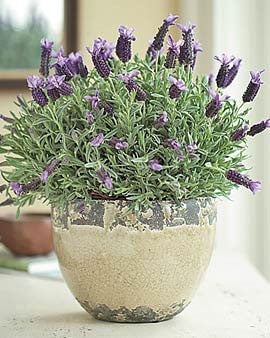
Keeping pests away from your lavender plants is essential to ensuring their health and vitality. One way to prevent pests is by regularly inspecting your plants for any signs of infestation. Look for pests such as aphids, spider mites, and whiteflies.
Tip: To deter pests, you can also plant companion plants, such as marigolds or chives, near your lavender. These plants can help repel insects and keep them away from your lavender.
Additionally, it is important to maintain good hygiene practices in your lavender garden. Remove any dead or decaying plant material, as it can attract pests and create a breeding ground for diseases.
Tip: Avoid over-watering your lavender plants, as excessive moisture can also attract pests. Make sure to provide proper drainage and water the plants only when necessary.
Pest Treatment:
If you discover a pest infestation on your lavender plants, it is important to take immediate action to prevent further damage. One option is to use organic pest control methods, such as spraying an insecticidal soap solution on the affected plants.
Tip: You can also make a homemade pest repellent by mixing water with a few drops of essential oils, such as lavender or peppermint oil. Spray this solution on your plants to deter pests.
In some cases, more severe infestations may require the use of chemical pesticides. However, it is important to carefully follow the instructions on the pesticide label and use them as a last resort.
Disease Prevention:

Preventing diseases in lavender plants is crucial for their overall health and longevity. One of the best ways to prevent diseases is by providing proper air circulation around the plants. Avoid overcrowding and ensure that there is enough space between each lavender plant.
Tip: Regularly prune your lavender plants to remove any dead or diseased branches. This will help improve air circulation and reduce the risk of fungal infections.
Another important aspect of disease prevention is to maintain well-drained soil. Lavender plants prefer sandy or gravelly soil that allows for proper drainage. Avoid over-watering and ensure that water does not pool around the roots of the plant.
Disease Treatment:
If you notice signs of disease, such as yellow or wilting leaves, it is crucial to act quickly to prevent further spread. One treatment option is to remove and destroy any affected parts of the plant. This will help prevent the disease from spreading to other parts of the lavender.
In some cases, applying a fungicide may be necessary to control the spread of diseases. However, it is important to choose a fungicide that is labeled for use on lavender plants and to follow the instructions carefully.
Tip: Consider using organic disease control methods, such as neem oil or a baking soda solution, to minimize the use of chemical fungicides.
By following these prevention and treatment techniques, you can protect your lavender plants from pests and diseases, ensuring their health and beauty for years to come.
Fertilizing Lavender: Boosting Growth and Blooming
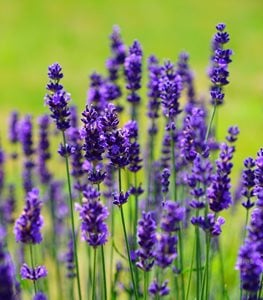
Understanding the Nutritional Needs of Lavender Plants
Fertilizing lavender is essential for ensuring optimal growth and blooming. Lavender plants have specific nutritional needs that must be met in order for them to thrive and produce vibrant flowers. Understanding these needs is the key to successful fertilization.
Nitrogen: Lavender plants require a balanced supply of nitrogen in order to promote healthy leaf growth. Nitrogen is essential for chlorophyll production and the overall development of the plant. However, excessive nitrogen can lead to lanky growth and reduced flowering, so it’s important to find the right balance.
Phosphorus: Phosphorus plays a crucial role in promoting blooming and the formation of healthy flower buds. Lavender plants that lack phosphorus may fail to produce abundant or vibrant flowers. It’s important to provide an adequate supply of phosphorus to support blooming.
Potassium: Potassium is essential for overall plant health and vigor. It helps regulate water uptake, improves disease resistance, and enhances the overall quality of the flowers. Fertilizers with a higher potassium content can help boost the growth and blooming of lavender plants.
Choosing the Right Fertilizer
When it comes to choosing the right fertilizer for lavender plants, it’s important to select a product that is specifically formulated for woody perennials or herbs. These fertilizers typically have a balanced NPK ratio (nitrogen, phosphorus, and potassium) that matches the nutritional needs of lavender plants.
Organic fertilizers, such as compost or well-rotted manure, can also be effective for feeding lavender. These natural fertilizers provide slow-release nutrients and help improve the overall soil quality, which can benefit the long-term health and blooming of the plants.
It’s important to follow the instructions on the fertilizer package and apply the product at the recommended times. Over-fertilizing can lead to excessive vegetative growth and may inhibit flowering, so it’s important to use fertilizers sparingly and avoid applying them late in the season.
Applying Fertilizer

When applying fertilizer to lavender plants, it’s best to spread the product evenly around the base of the plants, taking care not to heap it up against the stems. Gently work the fertilizer into the top layer of soil and water it thoroughly afterward to ensure proper absorption.
For established lavender plants, it’s recommended to fertilize once a year in early spring, just before new growth begins. Young lavender plants may benefit from a lighter application of fertilizer every 4-6 weeks during the growing season to support their rapid growth and establishment.
Regular watering is also important for the proper uptake of nutrients, so make sure to water your lavender plants regularly, especially during dry periods.
By understanding the nutritional needs of lavender plants and choosing the right fertilizer, you can effectively boost the growth and blooming of your lavender plants, ensuring they thrive and provide you with beautiful flowers for years to come.
Harvesting and Using Lavender: Practical and Creative Ideas
Harvesting Lavender
Harvesting lavender is a delicate process that requires timing and care. The best time to harvest lavender is when the buds have just started to open, but before they fully bloom. This is usually in the mid-morning, after the dew has dried, but before the heat of the day sets in. Using a pair of sharp scissors or pruning shears, cut the lavender stems one at a time, making sure to leave a few inches of the stem intact. Collect the cut stems in a basket or bouquet as you go.
Once you have harvested the lavender, tie the stems together with a piece of twine and hang them upside down in a cool, dry place. This will allow the lavender to dry naturally and preserve its fragrance. It typically takes about two to three weeks for the lavender to fully dry. Once dry, you can remove the buds from the stems and store them in an airtight container for later use.
Using Lavender
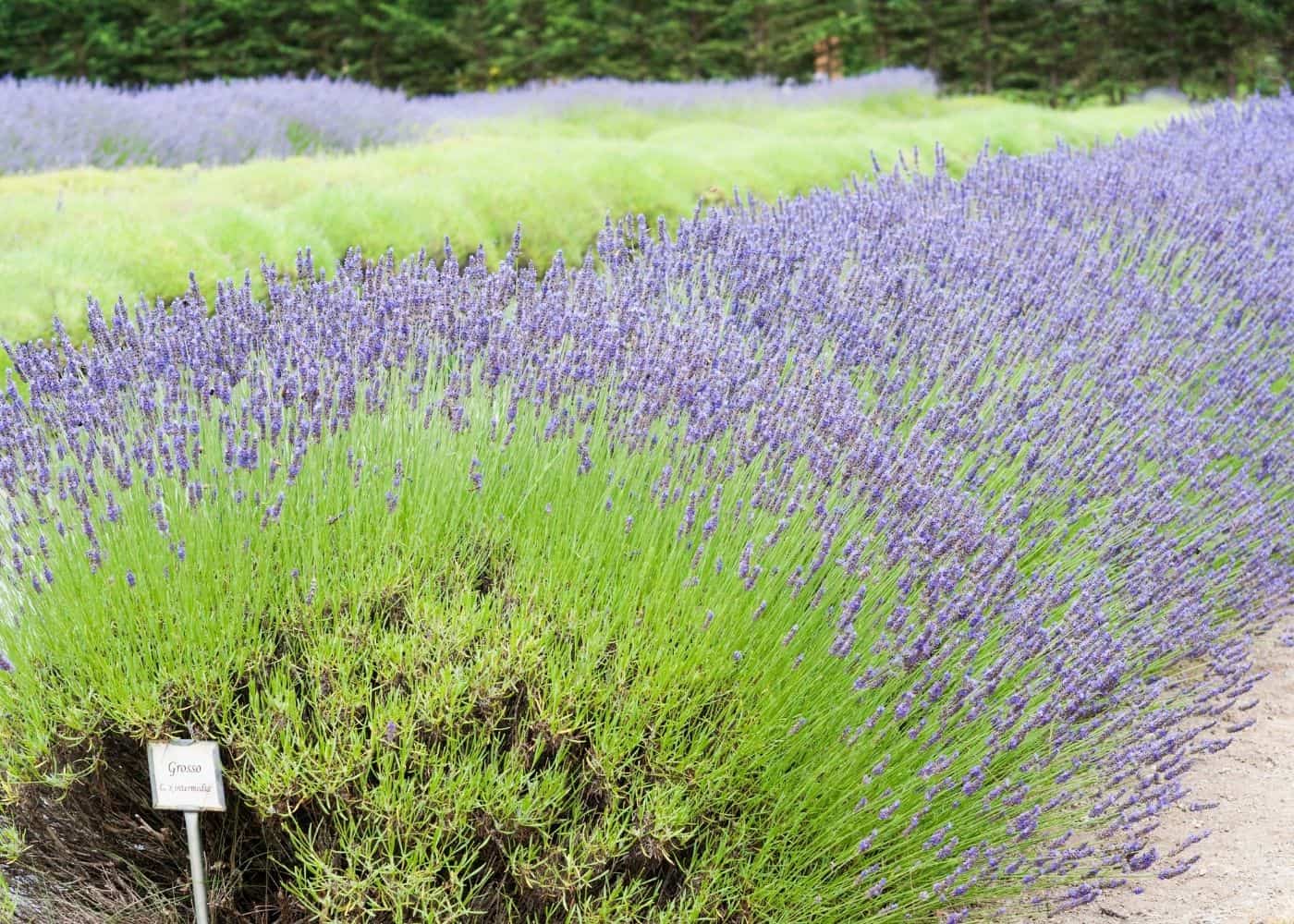
Lavender has a wide range of practical and creative uses in everyday life. Here are some ideas to make the most of your freshly harvested or dried lavender:
- Lavender Sachets: Fill small drawstring bags or fabric pouches with dried lavender buds and place them in your drawers or closets. The natural scent of lavender will help keep your clothes and linens smelling fresh and repel moths and other pests.
- Lavender Oil: Infuse lavender buds in a carrier oil, such as olive oil or almond oil, for a few weeks to create your own lavender oil. This versatile oil can be used for massage, added to bathwater for a relaxing soak, or used as a natural perfume.
- Lavender Tea: Steep dried lavender buds in hot water to create a soothing and aromatic herbal tea. Lavender tea is known for its calming properties and can help promote relaxation and better sleep.
- Lavender Crafts: Use dried lavender buds to create beautiful crafts, such as lavender sachets, wreaths, or potpourri. The delicate purple flowers and sweet scent of lavender add a touch of nature and beauty to any handmade project.
These are just a few practical and creative ideas for using lavender. Whether you enjoy the calming scent, the vibrant purple color, or the therapeutic benefits, lavender can enhance your everyday life in many ways.
Winter Care for Lavender Plants: Preparing for the Cold Season
1. Protect Lavender Plants from Freezing Temperatures
During the cold winter months, lavender plants can be susceptible to freezing temperatures, which can cause damage to the plant’s sensitive roots and foliage. To prevent this, it is important to take measures to protect the plants.
One way to protect lavender plants from freezing temperatures is to cover them with a layer of mulch. This will help insulate the soil and provide some protection to the plant’s roots. Additionally, you can use burlap or frost cloth to wrap around the plant, creating a barrier against the cold.
2. Ensure Proper Drainage to Prevent Root Rot
Lavender plants are susceptible to root rot, especially in winter when excess moisture can accumulate around the roots. To prevent this, it is crucial to ensure that the plants have proper drainage.
Consider planting lavender in well-draining soil and avoid overwatering. If you notice that the soil around the plant is consistently wet or waterlogged, it may be necessary to transplant the lavender to a more suitable location.
3. Prune Lavender Plants to Maintain Shape and Health
:max_bytes(150000):strip_icc()/growing-lavender-1402779-hero-d308fde4141e431eabe5ef2e5bf3ba11.jpg)
Winter is a good time to prune lavender plants to maintain their shape and overall health. Pruning helps remove any dead or damaged branches, promotes better air circulation, and encourages new growth in the spring.
To prune lavender, use a sharp pair of pruning shears and remove about one-third of the plant’s height. Be sure to cut just above a set of healthy leaves to encourage bushier growth. Avoid cutting into the woody stems, as this can harm the plant.
4. Protect Lavender from Winter Winds
Winter winds can be harsh and drying, which can negatively impact lavender plants. To protect the plants from strong winds, consider creating a windbreak using a fence, wall, or other structure.
If your lavender plants are in containers, you can move them to a more sheltered location, such as a porch or garage, to provide protection from the wind.
Overall, by taking the appropriate winter care steps, you can help ensure the survival and health of your lavender plants through the cold season, allowing them to thrive and bloom again in the spring.
Видео:
HOW TO WATER LAVENDER | Lavender problems | Lavender care tips | Short video
HOW TO WATER LAVENDER | Lavender problems | Lavender care tips | Short video by Anna’s Violets 2 years ago 1 minute, 1 second 8,320 views
Growing Lavender Indoors: Top Tips!! – Lavender World
Growing Lavender Indoors: Top Tips!! – Lavender World by Lavender World 2 years ago 3 minutes, 24 seconds 70,281 views
Spring Care Tips for Lavender
Spring Care Tips for Lavender by Proven Winners 3 years ago 7 minutes, 54 seconds 587,607 views
How to Water Mature Lavender Plants: Top Tips!! – Lavender World
How to Water Mature Lavender Plants: Top Tips!! – Lavender World by Lavender World 2 years ago 44 seconds 472 views
SECRET BAKING SODA HACK || The Most Powerful Organic Pesticide Mixture
SECRET BAKING SODA HACK || The Most Powerful Organic Pesticide Mixture by GARDEN TIPS 3 years ago 4 minutes, 13 seconds 6,385,483 views